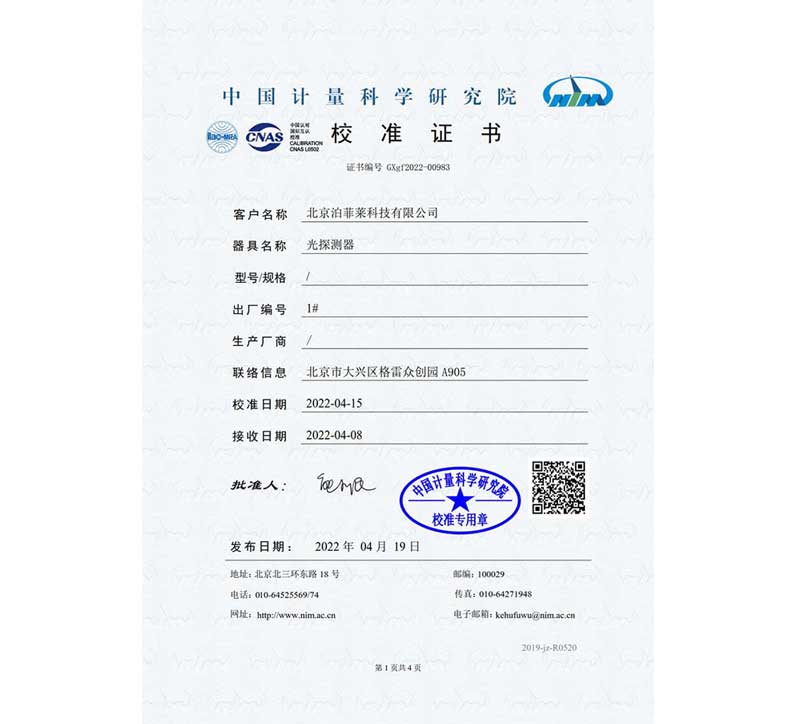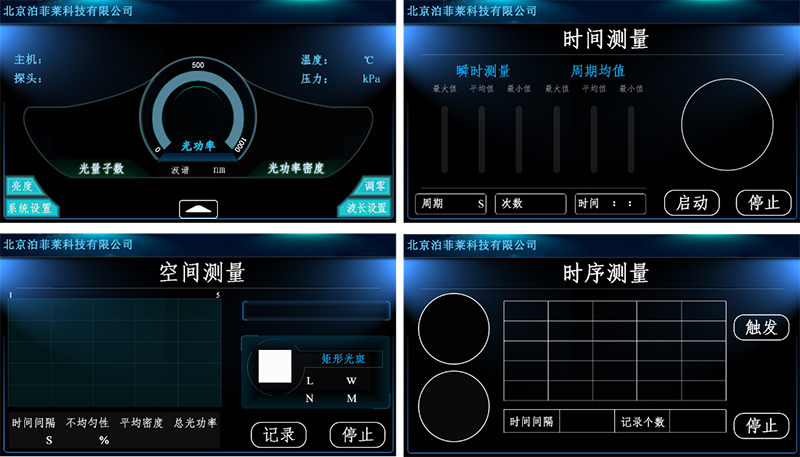Xenon lamps serve as the primary external energy source in photochemical experiments, and their energy intensity has a significant impact on experimental results. For the same xenon lamp source under the same electrical power conditions, factors such as the distance of irradiation, applied current, the model of used filters, the model of liquid filters, window material, and bulb usage time all contribute to significant differences in both optical power and spectral shape. Therefore, when conducting experiments using xenon lamp sources, experimenters need to use certified or calibrated optical power meters to measure and record the actual optical power or optical power density values for each experiment. Additionally, optical power density values are involved in the calculation of important metrics such as STH, AQY, IPCE, and ABPE. To ensure data accuracy, it's crucial to use xenon lamp sources and optical power meters correctly.
The PLD MOPM-I Multifunctional Optical Power Meter is designed to meet the requirements for optical power characterization. It can provide data on optical power, optical power density, average optical power density of non-uniform light spots, and light source characteristics.
The PLD MOPM-I Multifunctional Optical Power Meter features direct measurement mode, time measurement mode, spatial measurement mode, and time sequence measurement mode. The screen can also display probe temperature and environmental pressure values.
(1) Accurate measurement with measurement error < ±3% in the 400-1000 nm visible light range, certified by the National Institute of Metrology;

(2) Compatible with various probes such as photoelectric probes and thermoelectric probes, with a rapid response time in microseconds;
(3) Meets various experimental scenarios, directly reads the optical quantum numbers of monochromatic light and continuous light, and the built-in equivalent wavelength of continuous spectrum can also be directly input as the wavelength of monochromatic light; it can also measure the average optical power density of non-uniform light spots, facilitating the calculation of important values such as apparent quantum yield (AQY) and solar-to-hydrogen efficiency (STH);
(4) 5-inch touch screen for more convenient touch operation, with a high-resolution screen for clear display;
(5) Large-capacity battery with a standby time of more than 21 hours, equipped with a 5V/2A charger for charging.
● Wavelength Measurement Range: 200-1100 nm;
● Range: Between 300-1100 nm, 1000 mW/cm2;
● Measurement Accuracy: 200-400 nm in the UV region, measurement error < ±5%, 400-1000 nm in the visible region, measurement error < ±3%, 1000-1100 nm in the infrared region, measurement error < ±5%;
● Photoelectric Probe Resolution: 1 µW/cm2;
● Output Results: Optical power, optical power density, optical quantum number, average optical power density, non-uniformity of light spots, light intensity stability, light intensity change process, probe temperature, environmental pressure;
● Response Time of the Photoelectric Probe: Microseconds;
● Effective Size of the Probe: 4x4 mm2;
● Linearity: ±0.5%;
● Battery Capacity: 3000 mAh, standby time > 21 hours;
● Main Controller Dimensions: 180 mm x 112 mm x 32 mm;
In the direct measurement mode, it can directly read the numerical values of optical power and optical power density, eliminating the need for complex calculations, which is helpful for calculating the photocatalytic apparent quantum yield AQY.
In the spatial measurement mode, it can perform multi-point tests on surface light sources with different spot shapes, calculating the non-uniformity of light spots and average optical power density.
The time measurement mode and time sequence measurement mode can evaluate conventional light source characteristics and transient light sources, providing data on long-period stability and short-period transient stability.
